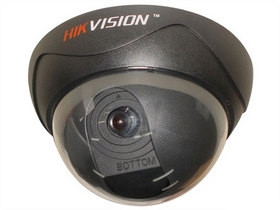
Learn about the video Security monitoring
With the continuous development of the video security monitoring industry, different industries such as public security, finance and environmental protection also have different monitoring needs for security manufacturers. While leading the trend of high-definition and intelligence of video, traditional hardware security manufacturers have been based on their own products.
Video technologies and concepts such as high-definition, intelligence, integration and linkage have been proposed and gradually matured. Video monitoring plays an increasingly important role in smart city monitoring. At the same time, it also puts forward higher requirements for video monitoring software and hardware technologies. Technology and industry demand promote each other, and together promote the development of smart city construction.
1. See further HD technology
720P, 1080P and other high-definition images have been widely used in traffic and other industries with high requirements for video quality. Pollution source monitoring involves the monitoring of gas, particles, suspended solids and other small objects, and there is also a demand for high-definition images. In addition to the high-definition of high pixels, you can see the high-definition laser platform several kilometers or even more than ten kilometers away video camera There is also more demand for water and air pollution monitoring.
2. More transparent "fog" penetration technology
Here, "fog" refers to haze, that is, the mixture of small water droplets or ice crystals suspended in the air and small solid particles. Haze will produce strong scattering and occlusion of light, making the image blurred and losing details. At present, there are two main types of fog penetration technologies for video surveillance, namely, electronic fog penetration and optical fog penetration. The electronic video fog transmission technology aims at modeling the imaging features such as smoke, fog and haze, and uses image processing technology to effectively restore details and colors to obtain accurate and natural fog transmission effects.
3. More targeted intelligent video analysis
Video intelligent analysis technology is an important technology for video surveillance from passive to active. Among them, behavior analysis, face recognition, license plate recognition and other technologies have been applied to public security, transportation and other industries.
4. Low power consumption and wireless transmission requirements
Many places that need observation are remote, so it is very difficult to supply power and wire transmission. Nowadays, many sensors support wireless transmission, and because of their low power consumption, a single battery can usually support data collection for several years. Compared with video capture equipment, it generally consumes more power, and a camera with lower power consumption is designed, so that the "wind and solar complementary" power supply mode can meet the power demand; At the same time, it supports wireless transmission, and can selectively upload videos or pictures, which has become the demand of environmental video monitoring.
5. Business integration and data mining
The video sensor network has become an important part of the "smart city", while the integration of video monitoring and environmental monitoring system business is still in the development stage, and more intersections also need to be constantly discovered and refined by security manufacturers.
At the same time, with this multi system data fusion, how to integrate and analyze massive cross regional and cross industry environment and video information, realize massive storage, processing, mining and analysis, and achieve "deeper intelligence" through cloud computing, virtualization, high-performance computing and other technical means is the core value of "smart city".
![]()






